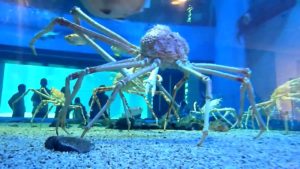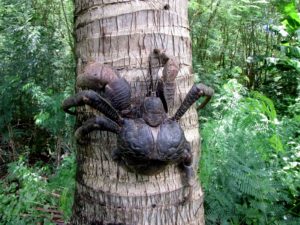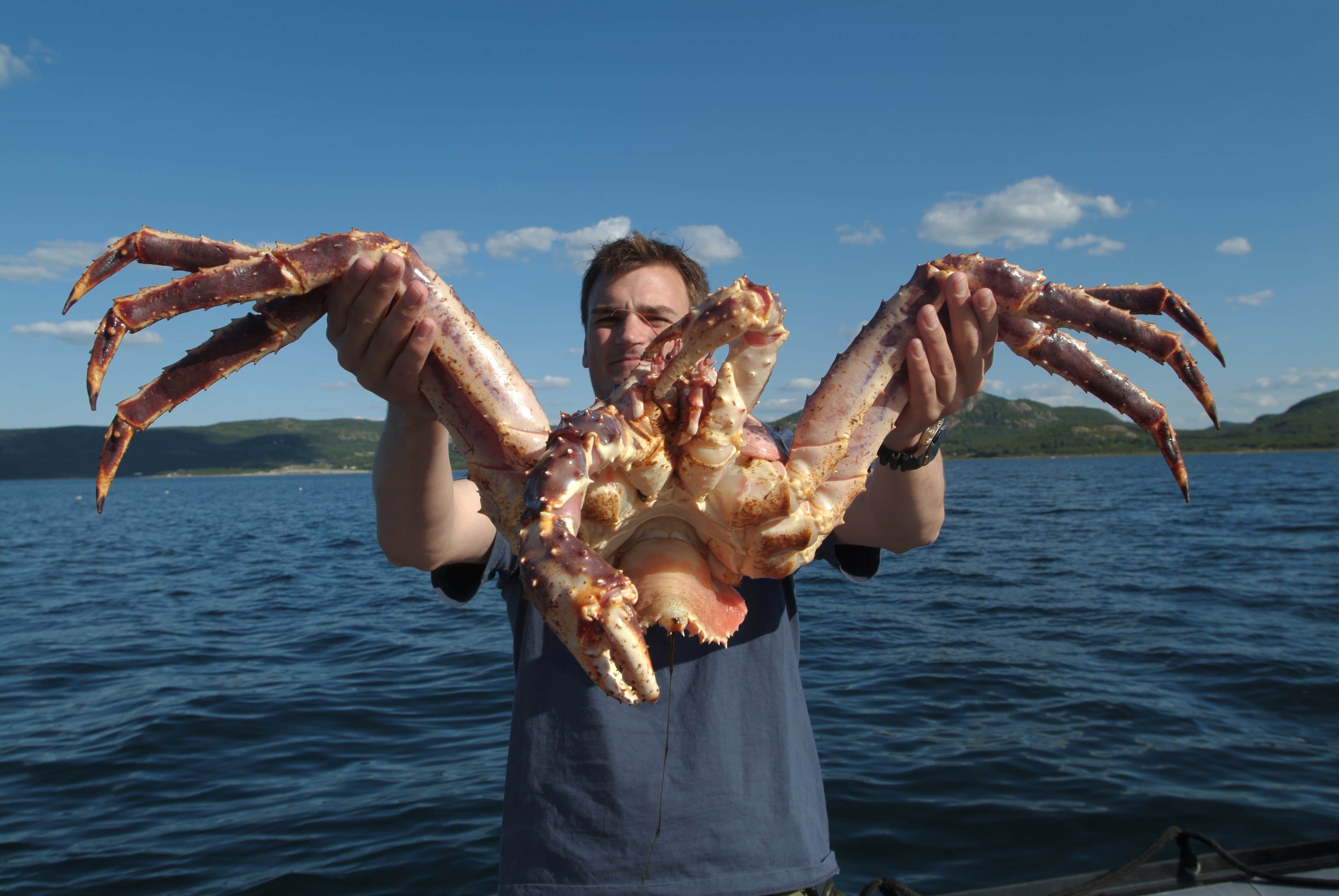We will learn about the largest crabs species, so you can have a better perception of these wonderful and even weird crustaceans.
When we go to the beach we always see these nice little animals that run sideways, and are the enjoyment of adults and children. However, maybe you didn´t know that there are larger crabs species, which have dimensions that amaze anybody.
Let’s get to know them
Table Of Content
Japanese Spider Crab: The largest crab species of all
The Japanese spider crab, carries the baton within the largest crabs species group, since no other exceeds its measures. Its scientific name is Macrocheira kaempferi, and it is the biggest crustacean in the world. This creature is an invertebrate by nature, whose body like that of most crabs, is covered by a triangular exoskeleton, and has long legs.
The Japanese spider crab´s legs can reach more than two meters in length, the frontal being the longest ones.
Therefore, the legs together with their body can reach a total extension of 3.8 meters.
As for their weight, these crabs can even reach 20 kilograms
The Japanese spider crabs are also characterized by being blinds, but they have a highly developed sense of hearing. In addition, they have some small hairs that allow them to capture sound waves in the ocean, so their blindness is not really an impediment for these crustaceans to find their food.
This species only lives at the Japanese Archipelago´s Pacific Ocean waters, at depths ranging from one hundred fifty (150) to three hundred (300) meters deep.
(We invite you to read our article Japanese Spider Crabs, for further information about this species
Tasmanian Giant Crab
The Tasmanian giant crab is a crustacean that inhabits the southern seas of Australia and the northern coast of Tasmania. Its scientific name is Pseudocarcinus gigas and it is the second largest crab species in the world, after the Japanese spider crab.
They can weigh up to 13 kilograms, while their shells measure around 46 centimeters in diameter, which means they are the same size than a car´s wheel.
The Tasmanian Giant crab is characterized by a whitish color on its lower portion and a red tonality on the upper one, while the tips of its pincers are black. The females´ shells change otheir color when they are producing eggs, which is a very distinctive feature of this species.
These crabs can be found at depths ranging from twenty to eight hundred meters; and they like to feed on carrion and slow-moving species, such as gastropods, starfish, and other smaller crustaceans.Even cannibalism has been documented among the crabs of this species.
We invite you to meet Claude, who weighs around seven kilograms and measures more than 38 centimeters wide, so it is the biggest Tasmanian Giant Crab ever found
Https://youtu.be/fKGyKCLnF5k
Coconut Crabs
The coconut crab is known at the scientific world as Birgus latro, and belongs to the family Coenobitidae.He owes his common name to his fondness for coconuts, which he captures by climbing palm trees and making use of his powerful pincers.One of the main characteristics of the coconut crabs, is given by their ability to apply around 3300 Newton through their claws, which is the highest power value in terms of proportion within the animal kingdom.
Coconut crabs are also commonly attracted by shinning objects such as silverware, metal containers and other things like that, so if they find any of such objects in their path, they just steal it without hesitating it to take it to their burrows.. For this reason, they are also called «rober crab». Although these creatures usually measure forty centimeters in diameter, their legs can reach the incredible length of one meter.
On the other hand, its weight oscillates between 5 and 9 kilograms, although it can vary depending not only on sex, but also on the specimen.
The male coconut crabs are usually much larger than females, as the case of most crabs species.
Scientists say that this is the greatest weight that terrestrial crustaceans can sustain without any risk to their extremities. Those crustaceans that live inside the water don´t have problems to support their weight, since they are helped by such liquid. (We invite you to read our article Coconut Crabs, for further information about this species.)

